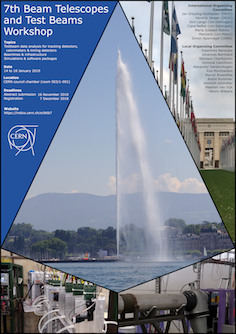Speakers
Description
Scope of the tutorial
In this tutorial, the participant will use the EUTelescope framework to reconstruct particle tracks of the EUDET-type telescopes, in order to test the response of an active DUT.
After converting the raw data to the LCIO data format using EUDAQ, the hits from the detector are grouped into clusters and then transformed into hits in the global coordinate system of the telescope. The General Broken Lines (GBL) algorithm is then used for aligning the planes and perform the track fitting.
The goal of the tutorial is to perform tracking in the presence of an active DUT, where a test data sample will be provided. Moreover, it will be explained how to extrapolate some basic but crucial quantities, such as the hit detection efficiency or the detector residuals. The goal is to provide the user with the knowledge to perform the reconstruction for several types of active DUTs.
For this tutorial, it is recommended to be already quite familiar with the EUTelescope reconstruction framework. A beginner's introduction is given in the first EUTelescope tutorial.
Preparation
We will offer different options to follow the hands-on by EUTelescope. An installation guide as well as further preparation recommendations will be provided in time before the workshop here.
